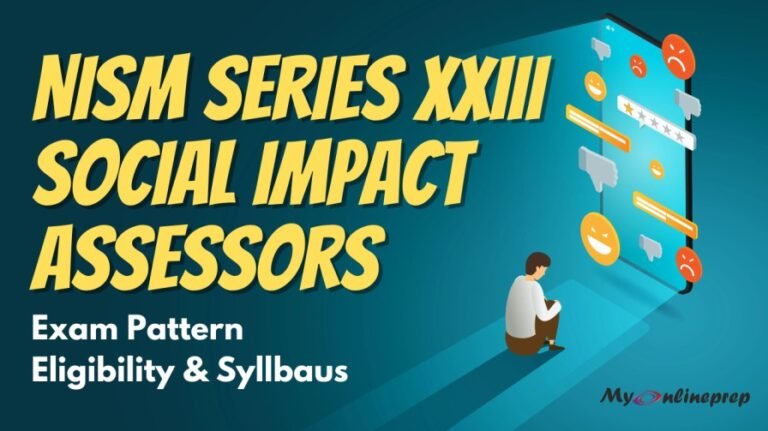Outcome-Based Education A Framework for Student-Centered Learning
Outcome-Based Education (OBE) has gained significant attention in the academic world as an innovative approach to teaching and learning. Unlike traditional education systems, which focus primarily on inputs like the curriculum and teaching methods, Outcome-Based Education shifts the focus to the outcomes or results that students should achieve by the end of their education. This student-centered approach ensures that learning is geared toward specific, measurable outcomes, which can vary depending on the needs of students, institutions, and industries.
In this blog, we will explore what OBE is, its key principles, benefits, and challenges, as well as how it is transforming education worldwide.
What is Outcome-Based Education (OBE)?
Outcome-Based Education (OBE) is an educational approach that emphasizes the achievement of specific outcomes or competencies by students. These outcomes are typically skills, knowledge, and attitudes that students are expected to demonstrate at the end of a course or program. In OBE, everything—from curriculum design to assessment—is aligned to ensure that students attain the desired outcomes.
Rather than focusing on what is taught, OBE emphasizes what is learned. This shift ensures that students are actively engaged in their learning process and that they acquire skills that are relevant to their future careers and life beyond school.
Key Principles of OBE
- Clarity of Focus In OBE, the primary focus is on the desired outcomes or end goals that students should achieve. These outcomes are clearly defined from the beginning of the course or program. All activities, instructional strategies, and assessments are aligned with these outcomes to ensure that students meet them by the time they complete their education.
- Designing Backwards Curriculum development in OBE is based on backward design. Educators first identify the outcomes or competencies students need to achieve, and then they work backward to design the curriculum, teaching methods, and assessments that will help students reach those outcomes. This ensures that the learning process is purposeful and aligned with the desired results.
- High Expectations for All Students OBE operates on the belief that all students can achieve high standards, given the right conditions and support. Educators set high expectations and provide students with the resources and opportunities they need to meet these expectations. This approach fosters a positive learning environment where students are encouraged to strive for excellence.
- Expanded Opportunities for Learning In traditional education systems, time is often a fixed variable, and learning outcomes can vary. In OBE, time becomes the flexible variable, while the outcomes are fixed. This means that students are given multiple opportunities to demonstrate their understanding and skills. If a student needs more time or resources to achieve the desired outcomes, they are provided with additional support to succeed.
The OBE Framework: Levels of Outcomes
OBE operates on multiple levels, each with its own set of outcomes:
- Institutional Outcomes At the institutional level, outcomes are broad and reflect the overall mission of the educational institution. These may include attributes like critical thinking, ethical reasoning, and effective communication, which every graduate is expected to demonstrate.
- Program Outcomes Program outcomes are specific to a particular academic program or discipline. For example, a business administration program may have outcomes related to leadership, financial analysis, and strategic decision-making. These outcomes ensure that students are prepared for the demands of their chosen field.
- Course Outcomes Course outcomes are the specific skills, knowledge, and attitudes that students are expected to demonstrate upon completing a course. These outcomes are directly tied to the program and institutional outcomes, creating a cohesive learning experience.
- Learning Outcomes Learning outcomes refer to the measurable achievements that students demonstrate in assessments or assignments. These are the most granular level of outcomes and are aligned with course objectives.
Benefits of Outcome-Based Education
- Student-Centered Learning One of the most significant advantages of OBE is its focus on the learner. Students are actively engaged in their education and are given clear goals to work toward. This ensures that learning is meaningful, relevant, and tailored to the individual’s needs.
- Improved Accountability Since outcomes are clearly defined and measurable, OBE provides greater accountability for both students and educators. Teachers are responsible for ensuring that their instructional methods lead to the achievement of outcomes, while students are accountable for demonstrating their competencies.
- Alignment with Industry Needs OBE ensures that graduates possess the skills and knowledge required by employers. By aligning program outcomes with industry standards, OBE helps institutions produce graduates who are job-ready and capable of contributing to their chosen professions.
- Flexible Learning Paths OBE recognizes that students learn at different paces and have different needs. It allows for flexible learning paths, where students can take the time they need to master outcomes. This adaptability is especially beneficial in modern, fast-changing industries where new skills are constantly required.
- Clear Assessment Criteria OBE provides transparent and clear assessment criteria. Students know exactly what is expected of them and how their work will be evaluated. This clarity reduces ambiguity and helps students focus on developing the required skills and knowledge.
Challenges of Implementing OBE
- Curriculum Redesign One of the biggest challenges of OBE is the need to redesign existing curricula. Traditional education systems are often structured around content delivery rather than outcome achievement. Transitioning to OBE requires a complete overhaul of teaching methods, assessment strategies, and course materials.
- Training and Development for Educators OBE demands a different approach to teaching and learning. Educators need to be trained in backward design, formative assessment, and personalized instruction. In some cases, this may require significant professional development and a shift in mindset.
- Standardization vs. Flexibility While OBE aims for clear outcomes, some educators worry that it may lead to an overly standardized approach to learning. Balancing the need for clear, measurable outcomes with the flexibility to address individual student needs can be challenging.
- Assessment Complexity Assessing outcomes can be more complex than traditional grading methods. OBE relies heavily on formative assessment, continuous feedback, and performance-based evaluation, which may require more time and resources to implement effectively.
Global Adoption of OBE
OBE has been adopted in various forms around the world. Countries like Australia, South Africa, and the United States have integrated OBE principles into their education systems to improve student outcomes and ensure alignment with industry demands. In the Philippines, OBE is increasingly being adopted by higher education institutions to meet the needs of a globalized workforce and prepare students for the 21st-century economy.
Conclusion
Outcome-Based Education (OBE) represents a significant shift in the way education is delivered and assessed. By focusing on the achievement of specific outcomes, OBE empowers students to take ownership of their learning and ensures that they graduate with the skills and knowledge needed to succeed in the real world. While the implementation of OBE poses challenges, its benefits far outweigh the difficulties, making it an effective approach to preparing students for the demands of a rapidly changing society.
Read More Here






